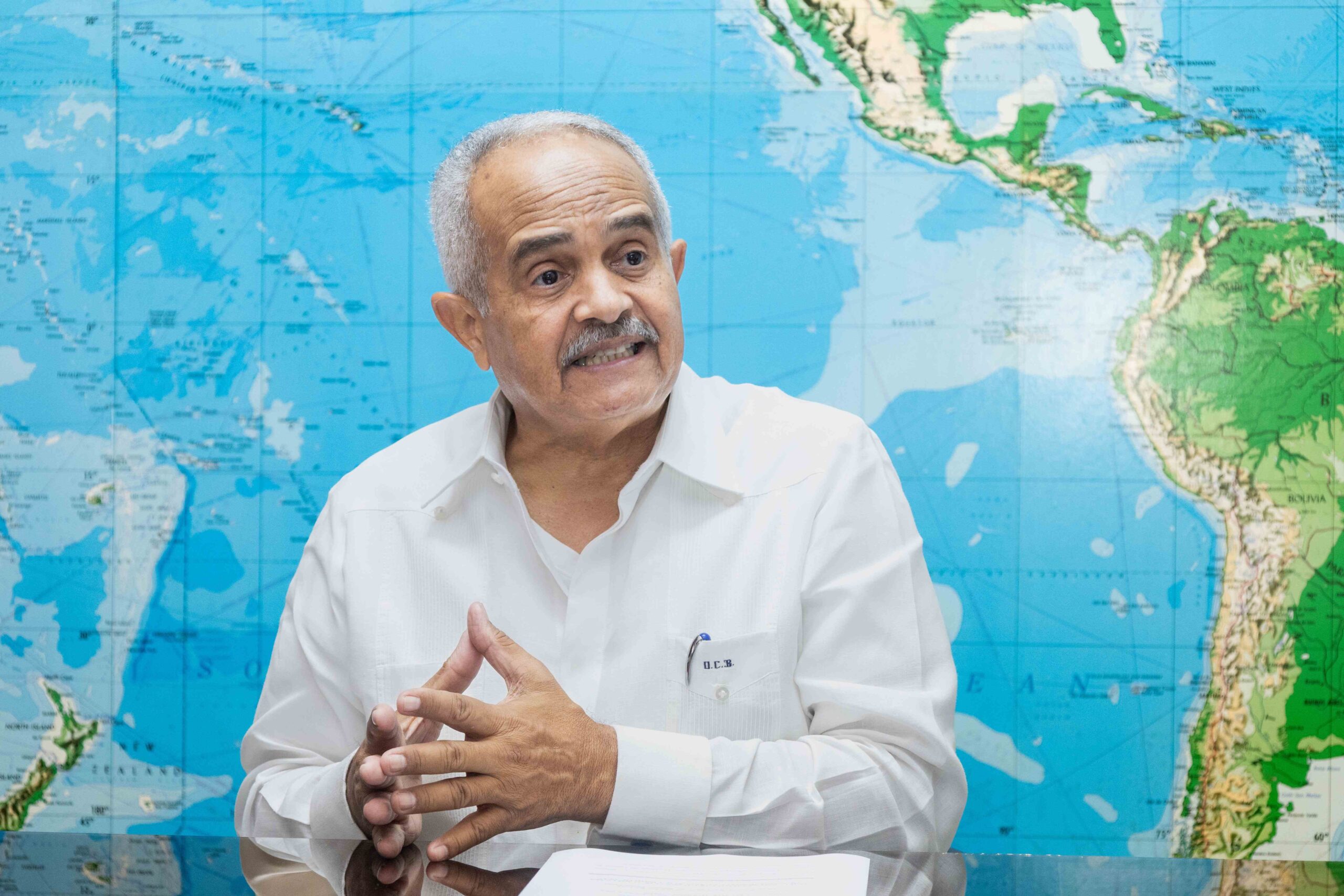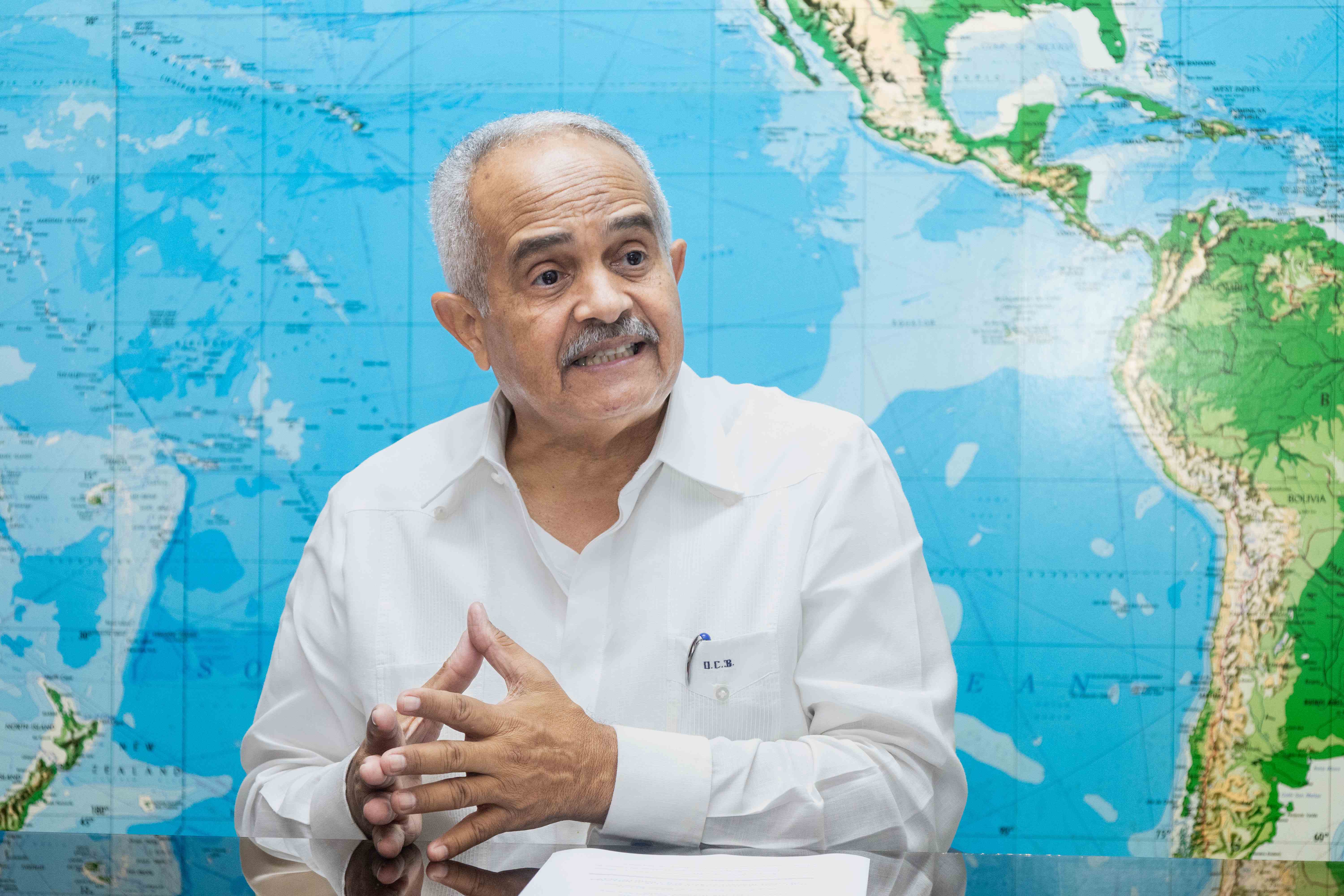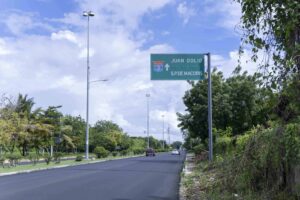
In a context marked by climate change, accelerated urbanization and the aging of the producing population, the agricultural sector is presented as a key source for the country’s economic future. This was highlighted by Osmar Benitez during a conversation in “Free Dialogue“, where he shared his vision on the opportunities and challenges facing the productive area.
“He agricultural sector In our country it represents a great opportunity to attract investmentsboth foreign and local, and for the creation of jobs“It is also an opportunity to generate wealth in rural areas and ultimately change lives,” said Benítez, president of the Dominican Agro-Business Board (JAD) and former Minister of Agriculture.
Benítez stressed that the Dominican Republic is one of the few countries that produces more than 90% of the demand for the basic food basket of its population, which includes essential products such as rice, beans and meats, among other foods used in the daily diet of Dominicans. He explained that the volumes of production local guarantee the self-sufficiency in the country in this area. However, he warned that the sector faces important challenges, including the need to modernization and adaptation of new technologies, access to credit and incorporation of more lands under irrigation.
Currently, there are more than 248,000 producers who have the daily challenge of feed approximately 24 million people, including the national population and the number of tourists who stay monthly in the different local destinations, in addition to meeting their export quotas.
“The agriculture It’s not just a business; it’s also a way of life. There are communities entire families that have spent generations cultivating or breeding for feed to their neighbors and to urban centers,” added Benítez, highlighting the importance of the sector for the sustainability and well-being of rural areas.
Food safety
“In the typical Dominican breakfast, which includes plantain, yuca or sweet potato with egg and salami, we produce practically everything locally. The Dominican Republic produces 100% of the plantains, 99% of the sweet potato, and all the eggs and cheese consumed in the country. Salami, another key component, is also locally produced. production local,” he said.
In that order, he calculated that the average of production Of the foods most used for the preparation of the three main dishes of daily meals, despite the natural events that affect crops, 100% is for rice, meats, bananas, cassava, sweet potatoes, eggs, white cheese and chicken, among others.
248,000
producers have the Agro-Business Board registered nationwide. Of these, 180,000 are affiliated.
While in the case of grains 60% of the world is grown, consumptionAs for spices, such as cinnamon, cloves and star anise, most are imported, as is a proportion of fish.
“We produce practically 100% of the rice that the Dominican people demand, even though we sometimes face extreme weather conditions, such as droughts or excessive rainfall. On average, we produce around 14 million quintals of rice in the two main harvests, spring and winter. consumption The monthly average in the country is about 126,000 quintals,” he reported.
As for meat, the most consumed protein in the country is chicken, and 100% of the country’s requirements and a large proportion of the amount Haiti imports are produced there. “We have the infrastructure to produce up to 25 million chickens a month,” he recalled.
When referring to the consumption of fish, clarified that there is a combination of import and production local, but Dominicans are not big consumers of fish, he noted.

Strengthen the credit
Benitez recognizes that the agriculturebeing vulnerable to atmospheric events, is one of the riskiest areas to invest in, but he explained that if crops are insured it could be more attractive for investors. However, the financial sector has not been sufficiently specialized in this area.
He also noted that access to the credit through formal banking is limited, with little flexibility. “One of the main challenges is the incorporation of new technologies and the modernization of the sector. This requires financing abundant and under flexible long-term conditions,” he explained.
I trust in the ability of resilience of the sector in the face of natural phenomena: “Since the formation of the island, we have faced hurricanes every year. Some have had a more significant impact, such as Hurricane David in 1979 and Hurricane Georges in 1998. Despite these challenges, the resilience of the agricultural sector has been remarkable. After storms and hurricanes, although there is damage, the rain they leave behind usually benefits the agricultureas it increases soil moisture and food supply.”
For Benitez, despite the lack of generational change, there is a future that needs economic support, he stressed that there is a growing interest in projects of aquaculture. “We are seeing growth in the aquaculturewith around 2,000 projects in inland waters and new developments in marine fish farming,” he said.
From September 4 to 6 this year, the Barceló Bávaro Convention Center in Punta Cana will host the 26th National Meeting of Leaders of the Agricultural Sector, where the main actors in the sector will meet to analyze the challenges facing agriculture in the Dominican Republic. This year, the focus will be: “The challenges of feeding 24 million consumers in the Dominican Republic.”
The event, which has established itself as a space for dialogue and collaboration, will be key for producers and authorities to work together in the search for innovative solutions that guarantee the sustainability of the agricultural sector. Among the topics to be discussed are the effects of climate change, such as high temperatures, tornadoes and hurricanes, which are affecting the country’s productive areas.
Another critical point will be the urbanization process, which has reduced the available agricultural land, endangering the productive capacity of a country that has only 48,670.82 km². The situation is aggravated by the aging of the rural population and the lack of generational change both in the countryside and in the technical institutions of the sector, according to the event’s agenda.
Participants will also discuss the need to strengthen watershed protection programs, preserve natural resources, and build infrastructure to ensure water supply for future generations. In addition, the possibilities of incorporating new technologies and expanding irrigation areas to increase agricultural productivity will be explored.



